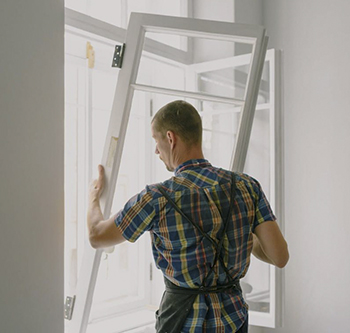Construction site investigation methods
Contents |
[edit] Introduction
Before construction work commences on site, it is often necessary to undertake a thorough site investigation. Approved document C, Site preparation and resistance to contaminants and moisture, suggests that the extent and level of site investigation should be tailored to the type of development and the previous use of land. A thorough site investigation can remove uncertainties that could have a serious impact on budgeting and risk.
Site investigation can be carried out as a desktop survey or a site survey. There are several resources available to assist with site surveys.
[edit] Historical maps
Libraries can have copies of original land maps. The history of a site can indicate the previous usage and any potential sources of contamination. It can also identify underground obstructions, original boundaries, roads and walkways.
[edit] Ordnance Survey maps
The Ordnance Surveys provides mapping in the UK, giving details of buildings, boundaries, structures, roads and surrounding properties. The maps are available in a range of scales.
[edit] Local authority archives
Local authority archives are a source of historical information which might include old maps, photographs, street records and other information.
Local authorities may also have a planning application database from which historical data for a site can be accessed and previous planning applications for the area can be viewed. This might provide information about existing or previous proposals for the site and any planning conditions or restrictions that might apply.
[edit] Aerial photographs
Specialist contractors can produce scaled photographs for potential sites.
[edit] Online methodologies
Online satellite maps are now readily available and it has become easier to access aerial photographs of potential sites. The maps can help with topographical details, and heights and levels can be established from shadows. The maps can also be used to establish potential tree preservation orders, floodplains and so on.
An online address search can also reveal historical data about historical property values, previous usage of the site and any existing investigation reports.
[edit] Laser scanning
Laser scanning is a method of collecting surface data using a laser scanner which captures the precise distance of densely-scanned points over a given object at rapid speed. The process is commonly referred to as a point cloud survey or as light detection and ranging (LIDAR, a combination of the words 'light' and 'radar'). It can be used to generate 3D imagery that can be converted for use in 3D computer aided design (CAD) modelling or building information modelling (BIM).
For more information see: Laser scanning.
[edit] Site inspections
A physical visit to site will be required to carry out site investigations. Items that can be missed on aerial maps might be; trees and hedges, boundaries, services, including pylons and phone lines and any other site obstructions. More detailed site investigations will include soil analysis which will be carried out to establish the soil characteristics that will be required for designing the sub-structure. Trial pits will be used to gather samples that will be sent off for analysis.
For more information see: Site surveys.
[edit] Related articles on Designing Buildings Wiki
- Conceptual site model.
- Contaminated land.
- Desk study.
- Development appraisal.
- Ground conditions.
- Ground investigation.
- Insitu testing of soils.
- Laser scanning.
- Pre construction information.
- Radon.
- Site appraisal.
- Site information.
- Site selection and acquisition.
- Site surveys.
- Soil survey.
- Technical due diligence.
[edit] External references
- BTEC National Construction, Pearson
Featured articles and news
Skills gap and investment returns on apprenticeships
ECA welcomes new reports from JTL Training and The Electrotechnical Skills Partnership.
Committee report criticises UK retrofit schemes
CIOB responds to UK’s Energy Security and Net Zero Committee report.
Design and construction industry podcasts
Professional development, practice, the pandemic, platforms and podcasts. Have we missed anything?
C20 Society; Buildings at Risk List 2025
10 more buildings published with updates on the past decade of buildings featured.
Boiler Upgrade Scheme and certifications consultation
Summary of government consultation, closing 11 June 2025.
Deputy editor of AT, Tim Fraser, discusses the newly formed society with its current chair, Chris Halligan MCIAT.
Barratt Lo-E passivhaus standard homes planned enmasse
With an initial 728 Lo-E homes across two sites and many more planned for the future.
Government urged to uphold Warm Homes commitment
ECA and industry bodies write to Government concerning its 13.2 billion Warm Homes manifesto commitment.
From project managers to rising stars, sustainability pioneers and more.
Places of Worship in Britain and Ireland, 1929-1990. Book review.
The emancipation of women in art.
Call for independent National Grenfell oversight mechanism
MHCLG share findings of Building Safety Inquiry in letter to Secretary of State and Minister for Building Safety.
The Architectural Technology Awards
AT Awards now open for this the sixth decade of CIAT.
50th Golden anniversary ECA Edmundson awards
Deadline for submissions Friday 30 May 2025.
The benefits of precast, off-site foundation systems
Top ten benefits of this notable innovation.
Encouraging individuals to take action saving water at home, work, and in their communities.
Takes a community to support mental health and wellbeing
The why of becoming a Mental Health Instructor explained.























